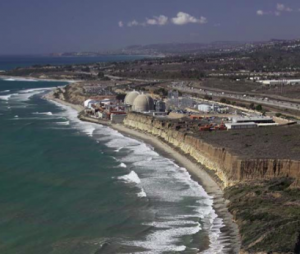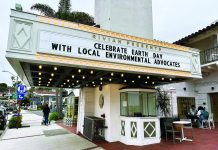
Changes at the San Onofre nuclear power plant that “crammed” 400 additional tubes into one generator required drilling that allegedly weakened the generator’s foundation, according to a study by the nuclear watchdog group Friends of the Earth.
The weakened foundation along with removing a support piece called the “stay cylinder,” designed to prevent vibration, caused the tubes to rub against other apparatus and resulted in radiation leaks, said the report, issued earlier this month.
Tube leaks indefinitely shut down both nuclear steam generators at the plant nearly two months ago.
A day after a 3.9 earthquake was recorded a few miles west of San Onofre, Irvine’s City Council voted Tuesday to send a letter requesting the Nuclear Regulatory Commission to close the nuclear power plant unless both reactors are free of vibration, corrosion and other degrading problems for the remaining 10 years of their current license. Laguna Beach’s City Council recently joined San Clemente and Irvine in formally voicing concern over the nuclear power plant’s safety.
Irvine also called for the resolution of other safety issues, such as permanent off-site storage of radioactive spent fuel, before relicensing is considered. At the council’s request, Edison officials agreed to return May 8 with plans to prevent summer blackouts should the reactors remain inoperable.
With fallout from Japan’s tsunami-bred nuclear disaster as a road map, Irvine is also asking regulators to order the plant’s operator to expand the evacuation zone to 50 miles from its present 10-mile radius and provide emergency services accordingly. A 50-mile radius extends into five California counties and three of the most populated, Orange, Los Angeles and San Diego; Irvine is 22 miles west of San Onofre and has a population of 220,000.
The power plant changes were presented to the NRC as constituting a complete replacement of the two steam generating motors with new ones in 2009 rather than equipment replacement, a point with which Friends of the Earth takes issue. “Yes, of course we were aware of their design change,” said Lara Uselding, NRC public information officer, who said design changes were reviewed and authorized by inspectors. Uselding confirmed that the changes constitute replacement of the motors.
Scott Andresen, spokesman for Southern California Edison, operator of the San Onofre plant, said the changes were not technically “design” changes. “There wasn’t a design change,” said Andresen. “The old steam generators were nearing their life expectancy. They had been there for about 25 years. There’s a certain percentage of tubes you can plug with the steam generators still being efficient and they were nearing that threshold of tube-plugging.”
Uselding said the ramifications of replacing the tubes and any ensuing vibration that could lead to leaks is under analysis. The NRC sent an inspection team to San Onofre shortly after the first unit was shut down on Jan. 31. Uselding said a public announcement will be made when the inspection is complete.
Holes were drilled in the tube sheet, a foundation supporting the generator, to accommodate the new tubes and a “stay cylinder” securing the generator was removed to accommodate the new tubes, says the report authored by nuclear engineer Arnie Gundersen, a former nuclear industry executive and licensed reactor operator now questioning the safety of nuclear power. Both of these changes resulted in vibration and wear on the tubes, causing them to leak, according to the report.
“Here’s a tip: when your nuclear reactor is springing leaks and radioactive pipes are deteriorating 20 times faster than they should, it’s a big deal, and no amount of nuclear spin by Edison or the NRC can hide that fact,” said Shaun Bernie, a nuclear specialist to Friends of the Earth, a Washington, D.C.-based environmental advocacy group. The organization was credited for pressing for the 2002 California Clean Cars Law, the nation’s first law regulating greenhouse gas emissions from passenger cars. The law has yet to be implemented.




